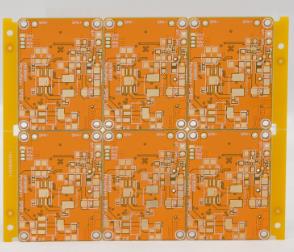Realize the recycling and utilization of waste PCB. The waste PCB is pyrolyzed by microwave to obtain a gas product that can be used as a fuel gas. Liquid products are mainly phenolic compounds, which are good chemical raw materials.
The use of microwave energy to treat waste PCBs is a new technology developed in recent years. This technology has the advantages of fast, high efficiency, low cost, and high resource recycling rate. It is a promising technology for recycling waste printed circuit boards.
A device that uses microwave energy to process waste PCBs and recover precious metals. Through this device, the harmless treatment of PCB is realized in the laboratory, and precious metals and vitrified substances that can be used as building materials are recovered.

The solid PCB products are mainly carbon-containing substances and metals. By changing the microwave irradiation power, various metal pellets are obtained after separation, and the carbon-containing residue after the removal of metals is activated to obtain a carbon material with good adsorption. So as to achieve the purpose of recycling waste printed circuit boards. Although the microwave PCB processing technology has not yet reached the level of large-scale industrialization, it has many advantages and huge development potential. It is believed that with the in-depth development of theoretical research.
Microwave technology is bound to play an important role in the near future. Biotechnology is a technology that has recently emerged, and there are fewer reports on the use of biotechnology to recycle PCBs. This technology uses the adsorption of certain microorganisms on the surface of gold minerals and the oxidation of microorganisms to solve the problems of precious metals that are difficult to recover by conventional methods in the recovery of PCBs. Carambola et al. proved that when the Fe3+ concentration is 6.66g/L, the number of microorganisms increases to 100%. When the pH value is 1.5, it is feasible to use Thiobacillus ferrooxidans to extract copper from the printed circuit board (PCB). Supercritical fluid technology is a method that uses the special physical properties of supercritical fluid to destroy the resin bonding layer in the printed circuit board, so as to realize the recovery and treatment of the material in the printed circuit board. The recycling of brushed circuit boards is considered to be one of the key and difficult points in the recycling of electronic and electrical products due to the complexity of its structure and constituent materials.
The supercritical fluid PCB technology is applied to the recycling process of waste printed circuit boards, and an environmentally friendly method for recycling waste printed circuit boards has been developed. The recovery model and recovery experiment platform were established, and the experiment was designed by orthogonal experiment design method, and the best process parameters were obtained by combining the actual experiment results.